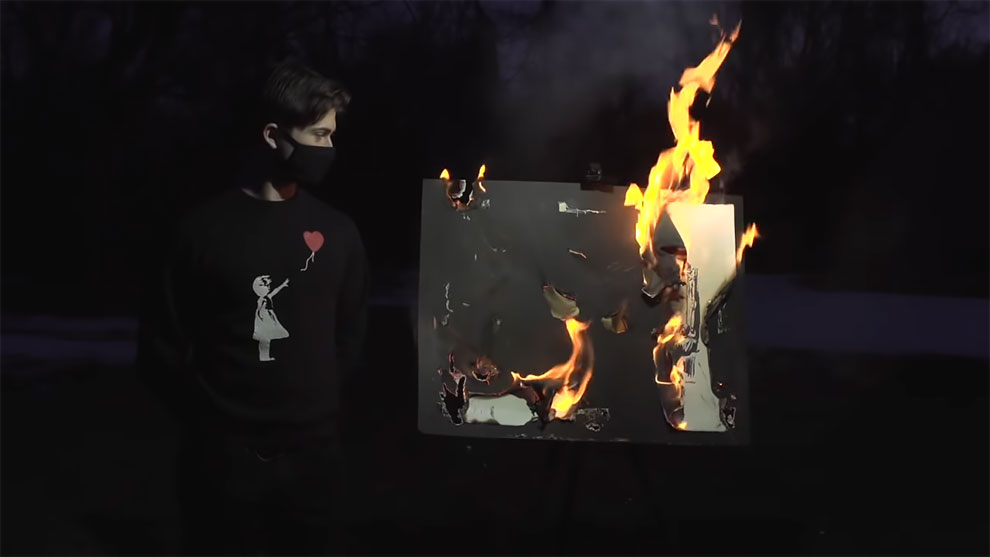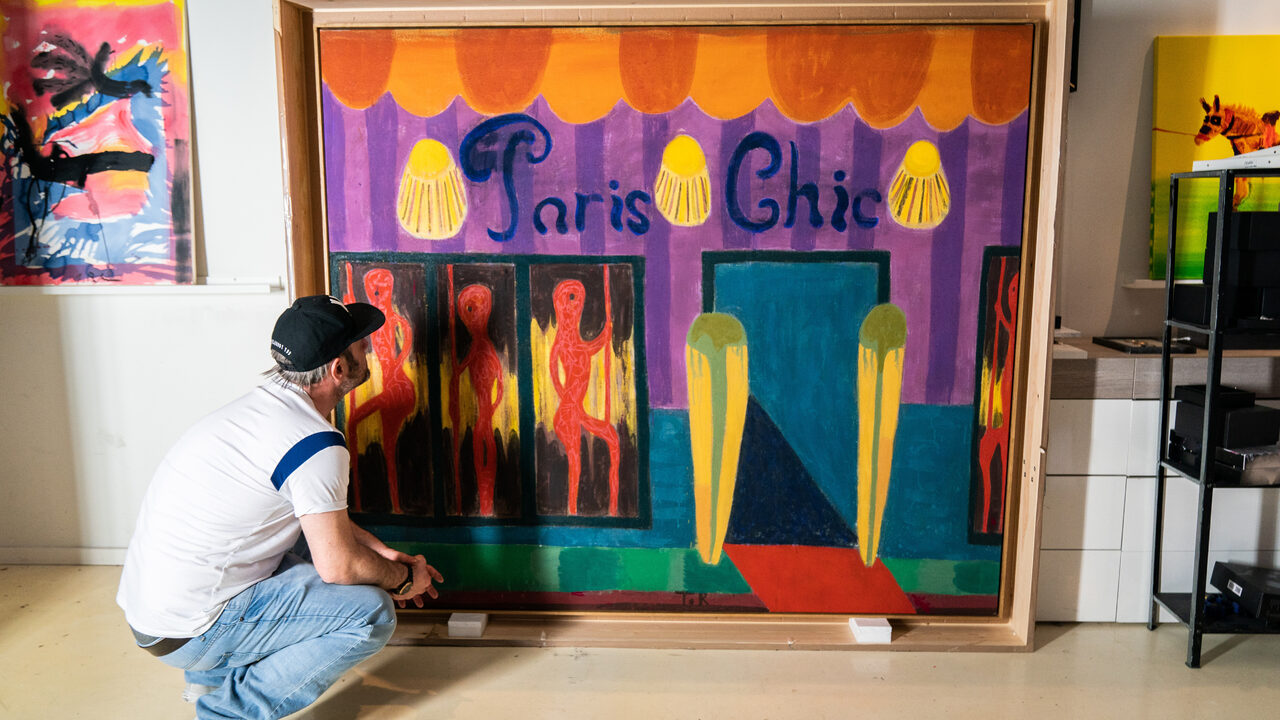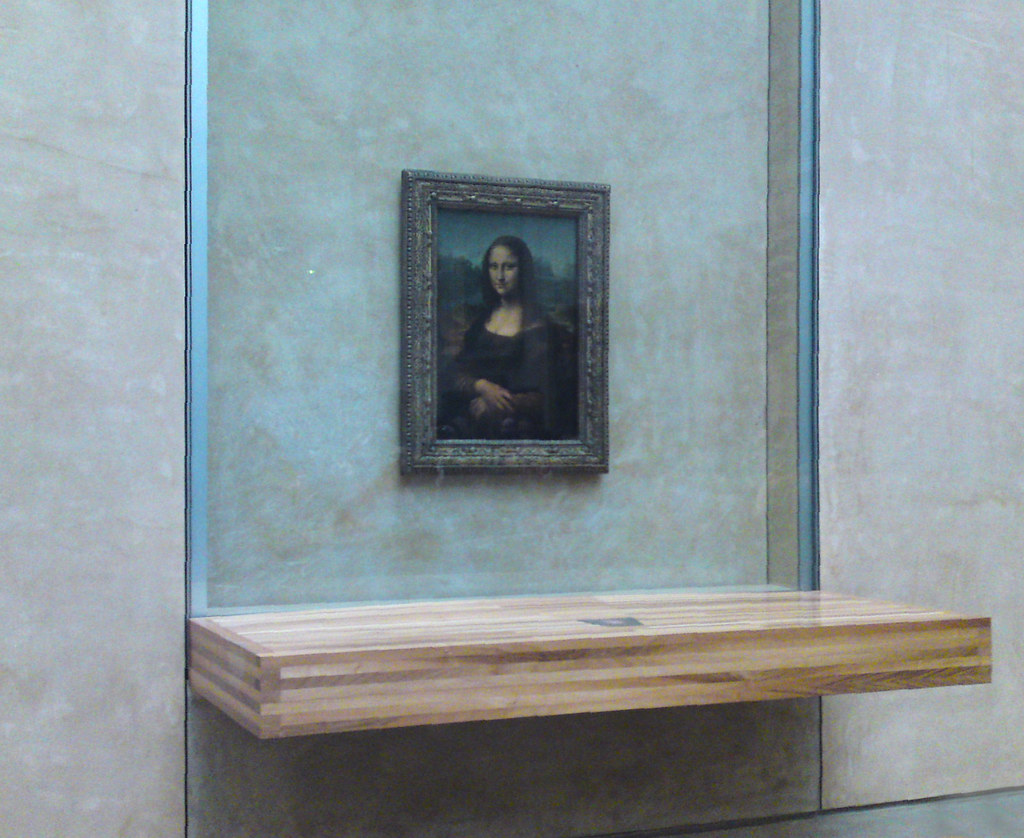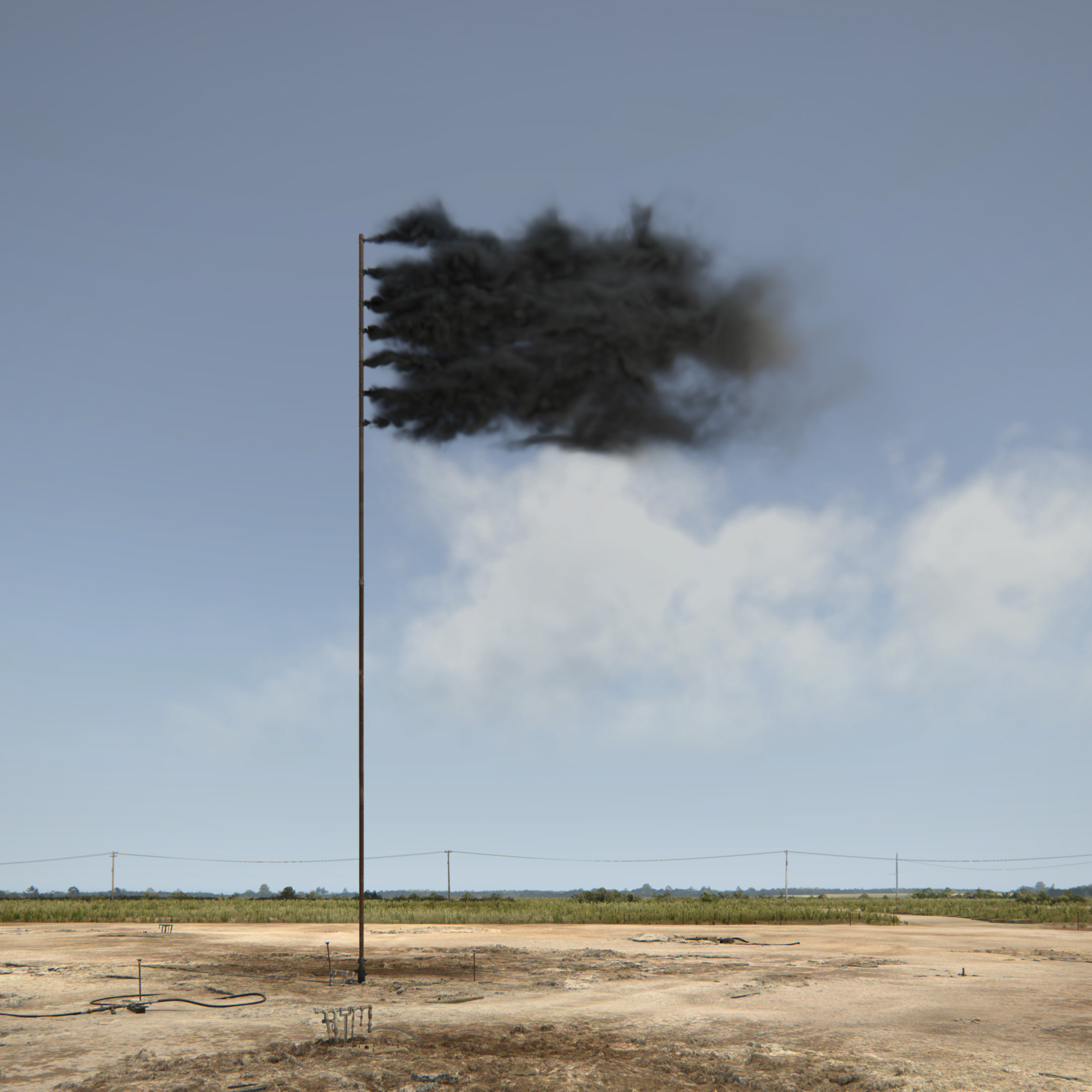Of course we could not not pick up on the latest developments on NFTs! We published in December 2018 Rachel O’Dwyer’s fascinating essay on the artwork as token and derivative, now Darren Caffrey wonders how the pandemic has affected the centuries-old tension between aesthetic appreciation and art-as-asset, and what the NFTs bring into the mix.
You will have noticed that art galleries have been shut for much of the past year. Even global art fairs and biennials have been affected by restrictions to movement and transit, causing postponements if not outright cancellations from Gwangju to Liverpool. As a public medium, art has had to reinvent aspects of itself, simply so that practitioners and galleries may continue to produce and develop work for an audience. Effectively, this is not a review of an art exhibition but instead a look at how art might be appreciated in 2021.
While there has not been any real public outcry for galleries or museums to be deemed essential services, their preservation as part of a wider economic strategy is clear. And yet how they return can only be influenced by what has happened since their initial closure, now more than a year ago. Everywhere is different according to the local advice and circumstances but, as we in Ireland have been reassured, we’re all in this together. We will see how that sentiment manifests as open doors allow people to return to doing what they enjoy or indeed what they must. The art gallery is a workplace and an event space, open to all, even if not appealing to all.
There remains for many a legitimate question about what art even is, and at times like we have been experiencing of late, this question is surely its greatest asset. But one thing is for certain, even during a global pandemic, the appreciation of art is two-fold. On one level it is something which the general public, celebrities and everyone in between are more or less fond of, at least enough to keep it in their homes. We can see this for ourselves in the background of video calls. Whether on television or on our own walls, it is clear that art is not fazed by what sometimes feels like the digitisation of our entire existence. In fact, in its most objective form, beyond any one style or subject, this same art that hangs on walls and stands on shelves is made for such a time. After all, we ourselves are not digital, only the marks that we are increasingly primed to leave behind us, from our active search histories to those moments where we have been publicly acknowledged. For good or bad, our material presence is as certain as the painting on our wall or the nose on our face.
This is perhaps the most beautiful realisation of all, and one which deserves some time to reflect on, but as the calls for reopening and the re-emergence of business as usual get ever louder, we have to accept that digitisation has been happening for over two decades and art is no more able to avoid its reach than we have. We may each attempt to live separate from the dematerialised world, choosing to access it as if it was a door that we can enter or not, but the direction of capitalism and as such business is most often chosen for us. As we understand it, these decisions are fundamentally about profit. And it is here that the second example of art’s appreciation during the last year is to be found. While it has long been accepted that art is both a passion and an asset, inspiration and equity, this dual condition has been squared off by it not really being clear what difference it made. What conflict? Especially when all that really seemed to matter was profit.
It is not that this has changed because of a pandemic: profit is still presumed to express the most clear representation of meaning for actions, whether they take place online or offline. So, as the gap narrows and the distinction between online and offline is less of a choice, the increase in inequality, along with shared concerns about the consequences of a rising sea level or shifting seasonal conditions or any number of factors implied under the innocuous title of climate change, the model favoured to resolve the present predicament is the same one that has provided us with no choice and no real belief in any other way of living.
When the doors of galleries do reopen, people will undoubtedly be looking for help trying to place what has just happened. Yet as the doors reopen and they let out the figurative causes for their closure, it will once more become apparent that only profit will keep those same doors from closing again. There are different ways to conceive of this required profit, but essentially it is a consideration of financial viability, whether commercially ascertained or delivered on a state-defined concept of usefulness. Is there still a benefit to the wider economy or has society shifted, and as such, can public demand be moved into new areas of encounter? The question then might be, are resources better invested in other forms of art and culturally targeted media?
Live attendance has been stopped in its tracks, and so the moment-to-moment nature of venue and event management that once occupied all attention will now understandably require a push to get going again, but it is not clear yet where it will be headed. With insurance requirements and individual behaviours meeting head on, as social distance comes to shape how we experience art and every other leisure activity that was attractive precisely for its casual enjoyment, will the opening up of dialogues be about what happens within the confines of a frame or will it be about how we ourselves have been framed?
By the consequence of a doomsday clock, a global pandemic or an unjustifiably disproportionate expression of the benefits and disadvantages of capitalism for profit, whoever says that they know what art is will likely leave it where they find it. And if art ever does fully succumb to the conditions that have determined its use value relative to its resale price, then, whether as an NFT recorded on a blockchain,[1] or as an item stored in a freeport warehouse, art will detach ever further from its key relationships and function within society.
When Beeple and Sacha Jafri this year joined David Hockney and Jeff Koons among the highest prices achieved for works by a living artist, it was surely because the beneficiaries of digitisation were aiming to make a statement. While Beeple, an American artist with a vernacular style and self-same following sold his work to a business associate, it was the price that made the evening news and the fact that the work was understood to be a digital file. Eton educated descendent of Islamic Maharaja, nonetheless Sacha Jafri is a painter in the more conventional sense. His work is credited by Guinness World Records as ‘Largest Art Canvas’ and was inspired by a compendium of drawings from children all around the world. All 70 segments or 1700 plus square feet were purchased in Dubai by a cryptocurrency entrepreneur, raising 62 million dollars in crytocurrency for the artist’s charity, but still shy of the 69 million that Beeple’s NFT fetched earlier that month.
The titles of each of these works, Everydays… The First 5000 Days and The Journey of Humanity respectively frame a direction that is leading the way, and which exists outside of critique. Either a gimmick or a charity auction, are these the only ways to approach art and its relationship to money via the asset in 2021? Statements can be made, currencies can be exchanged, but all that really appears to matter is how it constructs the role of art apart from any meaningful contextualization.
As an asset, art is either in on the joke or the joke is at art’s expense. One particular example of this took place a couple of years ago, before a pandemic was the backdrop for digital currency and the retreat of high street commerce. The buyers of Paris Chic by Tal R asserted their intention to cut it up. They wanted to use small sections of the painting in the dials of multiple high-end designer watches, offering the highest bidder first choice on where they should cut. When the artist challenged them through the courts, it was found that returning the painting back to the public in a different guise to how it was initially sold would be detrimental to the painter’s reputation and was deemed unlawful. This was quite different from previous instances of canvas destruction. When works by Francisco de Goya or Willem de Kooning were brought back to the public in a different guise it was believed to be done in the name of art, not profit.
In February of this year an authentic Banksy print was purchased by a group called Injective Protocol. They then took a cigarette lighter to it and burned it. The group livestreamed their activity and sold the video as an NFT for 380,000 dollars in cryptocurrency or four times what they paid for the print. Citing their activity as “an expression of art itself”, it is worth underlining that Injective Protocol is a derivative based online trading platform. By the beginning of April the claims of NFT platforms and technology were seized on by a hacker who calls himself Monsieur Personne. Already producing numerous NFTs of Beeple’s headline grabbing work, each unofficial reissue purports to carry all of the authentic signatures required by the blockchain. One such copy was gifted to a second anonymous account holder and is currently available for almost 69 million dollars less than Beeple’s associate paid only a month previous.
In response to this year’s growing public awareness, concerns mounted regarding the energy consumption of NFTs as a blockchain based application, with various estimates put forward, but none so concerning as the current energy requirements of standard cashless transactions [2]. It was the projected CO2 emissions that arose from computers arbitrarily processing massive volumes of data which achieved publicity, but only after a jump in share prices was seen across numerous cryptocurrency and digital finance ventures. In March, as SIPTU backed calls for a universal basic income for artists, John Gerrard established his own modest carbon reversal enterprise to account for his and others’ involvement in the world of NFTs and blockchain.[3]
The current circumstances around two works by Leonardo da Vinci exemplify the appreciation of art as an asset. One resides in The Louvre in Paris and, according to a Napoleonic decree of 1804, it is owned by the French people.[4] The other was bought in the US a couple of years ago for 450 million dollars on behalf of Saudi Prince bin Salman and it’s rumoured to have spent time with him on his private yacht. Mona Lisa and Salvator Mundi have both survived as paint pigment on wood panel for the past five hundred years, what is five thousand days compared to that? And even so, these two paintings have each met with very different fates. Conservateurs in Paris have so far refused to allow Mona Lisa to associate with Salvator Mundi, citing architectural and security difficulties while never denying outright that it is an authentic work of Leonardo Da Vinci. The Saudi Ministry of Culture have since refused to loan their painting unless it is hung next to the Mona Lisa.
It is worth considering then that in the 1950s this same painting sold as the work of an understudy for less than fifty English pounds. Only in the last decade, when it was cleaned and given a second look did it pique the interest of a much wealthier collector. Salvator Mundi or Saviour of The World was always known of, appearing in an inventory of paintings dating back to the 1600s but it was thought to have gone missing over the years. Various conjectures and accusations have for now cast a shadow over whosever hand painted it, but this fact that assets need to be legitimised in order to be appreciated for what they literally are raises an interesting point about art’s role in a for-profit world.
As a favoured medium of community outreach, nobody likes to think that art is a competition. And yet as a commercial enterprise, art takes its lead from investment capital and the world of international finance. It is as a characteristic of this second iteration that this year we got NFTs looking to exploit art’s long-established reliance upon reputation. The similarities between an externalised ledger which can only be accessed or altered by the agreement of those within a certain group as against how it is that art is valued by the market are surely not a coincidence. Believed to assure against forgery or illegitimacy, provenance and the substantiating factors which contribute to its continued application tend rather to secure the operations of an art network instead of delivering on the promises of an art world.
The forgery might destabilise art as an asset class, but it also proves that art is suited to extending beyond such self-limiting criteria. That is what makes art an asset capable of sustaining itself into the future, perhaps better than any form of pure capital. These are the truths that digitisation will undoubtedly reiterate as art’s relationship to finance increasingly exposes it to a technology which does not share its value for human appreciation. Truly what we appreciate about art is not what it is worth in the future but what it means to us now, in our presence, in whatever form the encounter takes
And so in the last week of May, state regulations announced in China and the US have begun to shorten the margins for private investors, seeing cryptocurrency lose a large percentage of its yearly gains. This was always a part of the model, with art and other proven collectibles serving as a useful draw to make profits for cryptocurrency’s long term investors. Of course, no one can tell you what art is worth in your life, but if it has provided you with a source of hope over the last twelve to fourteen months then you won’t need reminding and you won’t need any proof.



